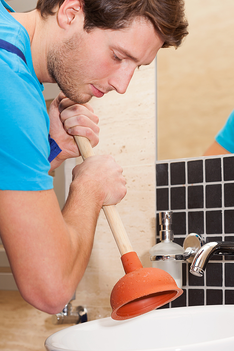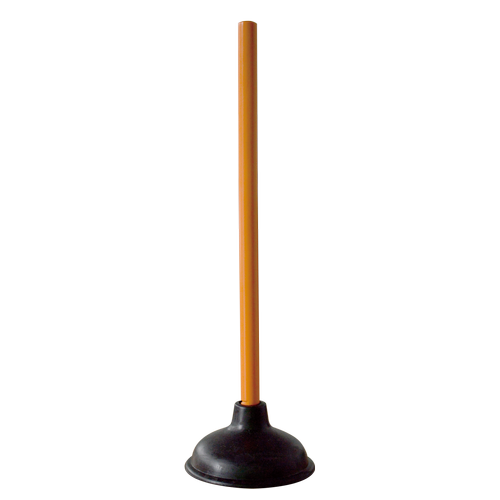Effective Plungers and Drain Cleaners Use: Key Advice
Effective Plungers and Drain Cleaners Use: Key Advice
Blog Article
The article which follows on the subject of How to Use a Plunger to Unclog a Toilet or Drain is absolutely intriguing. Don't skip it.

Intro
Appropriate upkeep of family drains is essential for stopping clogs and making sure smooth water circulation. Among the key devices in every homeowner's toolkit is the plunger, together with numerous drain cleansers developed to tackle persistent clogs properly. This post explores how to make use of bettors and drainpipe cleansers properly to maintain your drains moving openly.
Section 1: Understanding Plungers
Types of Plungers
There are several types of bettors readily available, each developed for different kinds of drains pipes and clogs. One of the most usual kinds include cup plungers, flange bettors, and accordion plungers.
Just How Plungers Work
Plungers deal with the concept of producing stress and suction to displace clogs. When correctly used over a drain, they produce a vacuum cleaner that can take out particles or break up obstructions.
Choosing the Right Plunger
Selecting the ideal plunger depends upon the sort of drainpipe and the nature of the obstruction. Mug plungers are optimal for sinks and bathtubs, while flange bettors are better fit for toilets as a result of their layout.
Common Mistakes with Plungers
Avoiding these blunders ensures efficient plunging: inappropriate seal around the drain, inadequate pressure, and unclear bordering debris.
Section 2: Using Plungers Effectively
Prep work
Prior to plunging, make certain the plunger covers the drainpipe entirely and develops a tight seal. Clear any type of noticeable debris around the drainpipe opening.
Strategy
Beginning with gentle plunging motions to construct suction. Rise pressure progressively, making use of a consistent rhythm. Repeat as essential until the drainpipe clears.
Fixing Tips
If plunging doesn't function, attempt adjusting the seal, applying oil jelly for a better seal, or utilizing a different sort of bettor.
Section 3: Comprehending Drainpipe Cleansers
Types of Drainpipe Cleansers
Drain cleansers can be chemical or chemical. Chemical cleaners make use of solid chemicals to liquify blockages, while enzymatic cleansers utilize all-natural enzymes to break down organic matter.
Just How Drain Cleaners Job
Chemical cleaners react with blockages to liquify them, while chemical cleansers break down natural materials like hair and grease without harming pipelines.
Safety Factors to consider
Always put on handwear covers and eye security when making use of chemical drainpipe cleaners. Ensure sufficient ventilation and comply with manufacturer guidelines thoroughly.
Eco-Friendly Alternatives
Consider utilizing vinegar and cooking soda or enzyme-based cleaners for environmentally friendly choices that are more secure for pipes and the setting.
Section 4: Using Drainpipe Cleansers Properly
Application Methods
Put chemical cleansers straight right into the drain opening. Allow them to benefit the advised time before flushing with hot water. Enzymatic cleaners ought to sit over night.
Safety measures
Avoid mixing different types of cleansers, as this can generate toxic fumes. Never make use of chemical cleansers along with a plunger, as spilling can take place.
Dealing With Stubborn Obstructions
For relentless blockages, take into consideration utilizing a pipes serpent or calling an expert plumbing to prevent damages to pipes.
Conclusion
To conclude, recognizing just how to make use of bettors and drain cleansers efficiently is crucial for maintaining healthy plumbing systems. By choosing the right tools and techniques, house owners can deal with small clogs and stop significant pipes problems down the line.
How To Properly Use A Plumbing Snake To Clear Drains
When any drain clogs in our home arise, we tend to gravitate toward the plunger and little else. In cases where the plunger and its vacuum-created pressure are not able to clear clogs, many immediately move to harmful chemicals or simply call their plumber to fix the issue.
we’re happy to help with all drain cleaning needs and concerns. This includes informing you on a few other home remedies you may have at your disposal for minor to moderate clogs, one of which is the use of a plumbing snake. Many people have never used one of these before – let’s go over the steps to take when your drain clogs and you have a plumbing snake available.
Attempt Plunger Use
The first step here, as we noted above, should indeed be to grab your plunger when you notice a drain clog and attempt to resolve it this way. If you’re unsure how to use a particular type of plunger, our plumbers can answer any questions you have. If this doesn’t do the trick, however, you move on to the snake.
Locate And Prepare Snake
A plumbing snake is a metal or plastic device that’s generally about a quarter of an inch thick. It’s design with significant extensions, meant to reach down into your clogged drain and push the clog out. Snakes also contain drain augers that will latch onto and push stubborn blockages.
If your plunger doesn’t clear a clog, locate your snake and bring it to the drain in question. We also recommend keeping a bucket nearby to collect the clog once you pull it out, plus we’d advise wearing goggles and possibly protective gloves.
Feed Snake
Once you’re ready to go, feed the snake slowly down the drain, using the crank device it comes with to keep it moving until it finds the clog. Once this happens, much of the clog will be latched onto the coil so you can pull it out, while the rest will simply break up and flow downward.
Detach Debris
Remove the snake slowly from the drain, and once you’ve done so, pick off any debris that’s stuck to the coil. This is another area where wearing gloves is a must.
Flush Drain
Finally, take a few minutes to ensure the snake has done its job correctly. If you’ve been using it on a toilet, flush the toilet a couple times and make sure everything flows well. If you’ve used it on a different drain, flush it with some room temperature water.
https://www.mybuddytheplumber.com/blog/how-to-properly-use-a-plumbing-snake-to-clear-drains/

Application Methods
Put chemical cleansers straight right into the drain opening. Allow them to benefit the advised time before flushing with hot water. Enzymatic cleaners ought to sit over night.
Safety measures
Avoid mixing different types of cleansers, as this can generate toxic fumes. Never make use of chemical cleansers along with a plunger, as spilling can take place.
Dealing With Stubborn Obstructions
For relentless blockages, take into consideration utilizing a pipes serpent or calling an expert plumbing to prevent damages to pipes.
Conclusion
To conclude, recognizing just how to make use of bettors and drain cleansers efficiently is crucial for maintaining healthy plumbing systems. By choosing the right tools and techniques, house owners can deal with small clogs and stop significant pipes problems down the line.
How To Properly Use A Plumbing Snake To Clear Drains
When any drain clogs in our home arise, we tend to gravitate toward the plunger and little else. In cases where the plunger and its vacuum-created pressure are not able to clear clogs, many immediately move to harmful chemicals or simply call their plumber to fix the issue.
we’re happy to help with all drain cleaning needs and concerns. This includes informing you on a few other home remedies you may have at your disposal for minor to moderate clogs, one of which is the use of a plumbing snake. Many people have never used one of these before – let’s go over the steps to take when your drain clogs and you have a plumbing snake available.
Attempt Plunger Use
The first step here, as we noted above, should indeed be to grab your plunger when you notice a drain clog and attempt to resolve it this way. If you’re unsure how to use a particular type of plunger, our plumbers can answer any questions you have. If this doesn’t do the trick, however, you move on to the snake.
Locate And Prepare Snake
A plumbing snake is a metal or plastic device that’s generally about a quarter of an inch thick. It’s design with significant extensions, meant to reach down into your clogged drain and push the clog out. Snakes also contain drain augers that will latch onto and push stubborn blockages.
If your plunger doesn’t clear a clog, locate your snake and bring it to the drain in question. We also recommend keeping a bucket nearby to collect the clog once you pull it out, plus we’d advise wearing goggles and possibly protective gloves.
Feed Snake
Once you’re ready to go, feed the snake slowly down the drain, using the crank device it comes with to keep it moving until it finds the clog. Once this happens, much of the clog will be latched onto the coil so you can pull it out, while the rest will simply break up and flow downward.
Detach Debris
Remove the snake slowly from the drain, and once you’ve done so, pick off any debris that’s stuck to the coil. This is another area where wearing gloves is a must.
Flush Drain
Finally, take a few minutes to ensure the snake has done its job correctly. If you’ve been using it on a toilet, flush the toilet a couple times and make sure everything flows well. If you’ve used it on a different drain, flush it with some room temperature water.
https://www.mybuddytheplumber.com/blog/how-to-properly-use-a-plumbing-snake-to-clear-drains/

As a passionate person who reads about A Guide to Plungers (and How to Use Them), I assumed sharing that chunk was really useful. Those who appreciated our article if you please make sure you remember to pass it around. We thank you for your readership.
Schedule Service Pickup Report this page